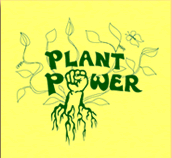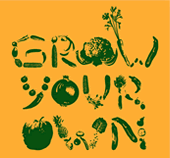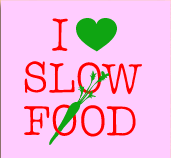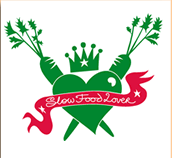





ORGANICALLY GROWN - A SAFER BET ALL ROUND
Organic Food - 10 Good reasons to buy organic
What is GM - Genetically Modified food?
.............The Biotech Revoution
............."Frankenfood" fears
.............Growing globalisation
.............Can you trust GM foods?
Organic Cotton


Organic systems recognise that our health and that of the farmers is directly connected to the health of the soil.
Mostly when we talk about organics we are referring to food but cotton used for making textiles for example can also be grown organically.
Organic farmers aim to produce from a balanced living soil. Strict regulations, known as standards, define what they can and can't do. They place strong emphasis on protecting the environment.
Organic farmers use crop rotations to make the soil more fertile. For example, a farmer might graze sheep on a field one year, making the soil more fertile, then plant wheat the next and so on.
They can't grow genetically modified crops and can only use - as a last resort - seven of the hundreds of pesticides available to farmers (the Soil Association, however, only allow four of these).
Parasite problems in farm animals are controlled by regularly moving animals to fresh pasture and other preventative methods, not routinely dosing the animals with drugs.
> Top for taste
Many people buy organic food because they believe it tastes better than non-organic. This could be because organic fruit and vegetables tend to grow more slowly and have a lower water content, which may contribute to the fuller flavour some people experience. A poll in 2005 showed that quality and taste of food are important to more people than low prices.
> It's healthy
On average, organic food contains higher levels of vitamin C and essential minerals such as calcium, magnesium, iron and chromium as well as cancer-fighting antioxidants. Organic milk is naturally higher in Omega 3 fatty acids, Vitamin E, Vitamin A (Beta Carotene) and certain other antioxidants than non-organic milk.
> No nasty additives
Only 32 of the 290 food additives approved for use across the EU are permitted in organic food. Amongst the additives banned by the Soil Association are hydrogenated fat, aspartame (artificial sweetener) and monosodium glutamate which have been linked to health problems.
> Avoids pesticides
The best way of reducing your exposure to potentially harmful pesticides is to eat organically grown food, where their use is avoided. 150 of the commonly used pesticides are potentially cancer causing and some of these cannot be washed off.
There are real concerns about the links with pesticides and cancers, decreasing male fertility, foetal abnormalities and chronic fatigue syndrome to name but a few. Even food
that we think is healthy, such as non-organic Cox's apples, can be sprayed 16 times.
Over 311 pesticides can be routinely used in non organic farming and residues are often present in non-organic food. Over 40% of all non-organic fruit, vegetables and bread tested in 2005 contained pesticides according to the Government's Pesticide Residues Committee.The results for particular fruit and vegetables were much worse, e.g. chemicals were found in all oranges tested, 90% of bread, 72% of grapes, 95% pears.
Organic farmers predominantly use natural methods to control pests, weeds and disease. So buying organic is one way to reduce the chances that your food contains pesticides.
> GM-free
Genetically modified (GM) crops and ingredients are not allowed under organic standards. Over a million tonnes of GM crops are imported to feed non organic livestock that produce much, if not most, of the non organic pork, bacon, milk cheese and other dairy products in our supermarkets.
> Reliance on drugs removed
Antibiotic additives routinely added to animal food to speed animal growth are linked with bacterial resistance in humans to the same or closely related antibiotics. Soil Association standards ban the routine use of antibiotics.
> No hidden costs
Compare this with the £120m that tax payers fork out annually to pay for chemicals to be removed from drinking water, mainly as a result of the pesticides used in farming.
> High standards
Organic food comes from trusted sources. All organic farms and food companies are inspected at least once a year. The standards for organic food are laid down in European law.
> Care for animals
No system of farming has higher levels of animal welfare standards than organic farms working to Soil Association standards.
When lots of animals are kept in cramped, stressful conditions they can become ill quickly. To prevent this non-organic farmers can put antibiotics routinely in their feed.
However there are worries that these low level but constant doses may end up making them ineffective when they are used to treat actual diseases in both humans and animals.
Organic farmers can only use antibiotics when an animal falls ill. They take many steps to prevent this from happening – such as keeping smaller flocks and herds, giving them a natural diet and ensuring they can free range.
Under organic standards, the withdrawal period (time lapse between animal having antibiotics and the meat or milk going on sale) is double or in some cases triple that of non organic standards. This is to ensure that there is no risk of residues.
> Good for wildlife and the environment
Overall organic farming supports more farmland wildlife than non-organic farming. The UK government has said that it is better for wildlife, causes lower pollution from sprays, produces less carbon dioxide - the main global warming gas - and less dangerous wastes
An important reason for choosing organic is in order to avoid Genetically Modified foods seen by the majority of the public as an unnecessary risk to be taking.
A genetically modified organism (GMO) or genetically engineered organism (GEO) is an organism whose genetic material has been altered using genetic engineering techniques.
These techniques are generally known as recombinant DNA technology. With this technology, DNA molecules from different sources are combined in vitro into one molecule to create a new gene.
This DNA is then transferred into an organism and causes the expression of modified or novel traits and the resulting organism is said to be "genetically modified," "genetically engineered," or "transgenic."
By far the most common genetically modified (GM) organisms are crop plants. But the technology has now been applied to almost all forms of life, from pets that glow under UV light to bacteria which form HIV-blocking "living condoms" and from pigs bearing spinach genes to goats that produce spider silk.
GM tomatoes, as puree, first appeared on British supermarket shelves in 1996, but the consumer furore that surrounded GM technology did not erupt until February 1999. This was because a controversial study suggested that a few strains of GM potatoes might be toxic to laboratory rats.
What followed was a fervorous European anti-GM food campaign.
Spearheaded in the UK by environmental groups and some newspapers, the campaign had far-reaching consequences. It culminated in an unofficial moratorium on the growth and import of GM crops in Europe and led to a trade dispute with the US.
GM crops are today rare in Europe as strict labelling laws and regulations are in place for food, and public opinion towards the technology remains largely negative.
Several UK government reports have offered qualified support for GM crops and produce, though they argue that the economic benefits of the technology are currently small.
Some African nations have also opposed engineered crops, even to the point of rejecting international food aid containing them.
GM produce has been taken up with far less fuss in the US (where it does not have to be labelled), India, China, Canada, Argentina, Australia and elsewhere.
However controversy over a type of GM corn - only approved for animal feed - which turned up in taco shells and other products stirred opinion in the US.
> Biotech revolution
The human race has methodically improved crop plants through selective breeding for many thousands of years, but genetic engineering allows that time-consuming process to be accelerated and exotic traits from unrelated species to be introduced. But not everyone agrees this represents progress.
The root of genetic engineering in crops lies in the 1977 discovery that soil bug Agrobacterium tumefaciens can be used as a tool to inject potentially useful foreign genes into plants.
With the help of that microbe, and other gene-implantation technologies such geneticists have developed a multitude of new crop types.
Most of these are modified to be pest, disease or herbicide resistant, and incude: soya, wheat, corn (maize), oilseed rape (canola), cotton, sugar beet, walnuts, potatoes, peanuts, squashes, tomatoes, tobacco, peas, sweet peppers, lettuce and onions, among others.
The bacterial gene Bt is one of the most commonly inserted. It produces an insecticidal toxin that is said to be harmless to people.
Supporters of GM technology argue that engineered crops - such as vitamin A-boosted golden rice or protein-enhanced potatoes - can improve nutrition, that drought- or salt-resistant varieties can flourish in poor conditions and stave off world hunger, and that insect-repelling crops protect the environment by minimising pesticide use.
Other plants have been engineered to improve flavour, increase shelf life, increase hardiness and to be allergen-free (see also: hay fever-free grass). Geneticists have even created a no-tears onion to banish culinary crying, and novel caffeine-free coffee plants.
> "Frankenfood" fears
It is believed that the nicknamed "Frankenstein foods" could have unforeseen, adverse health effects on consumers, producing toxic proteins and allergens or transferring antibiotic-resistance and other genes to human gut bacteria to damaging effect.
Other possible threats are that modified crops could become insidious superweeds, or that they could accidentally breed with wild plants or other crops - genetically poluting the environment.
This could be a potentially serious problem if "pharm" crops, engineered to produce pharmaceutical drugs, accidentally cross breed with food varieties or seeds become mixed up.
Large numbers of field trials, carried out by the UK government and others, reveal that gene transfer does occur.
One 2002 study showed that transgenes had spread from US to traditional maize varieties in Mexico. A 2004 study revealed that conventional varieties of major US food crops have also been widely contaminated. Another study proved that pollen from GM plants can be carried on the wind for tens of kilometres.
Many experts agree that insect-repelling plants will also speed the evoution of insecticide-resistant pests.
Environmentalists also argue that growing GM crops affects farmland biodiversity.
> Growing globalisation
The growing globalisation of agriculture is a trend that worries some. Activists and farmers worry that the agricultural biotech industry is encouraging reliance on their own-brand herbicide-resistant plants (Roundup Ready for example), which could create monopolies.
Companies such as Monsanto or Syngenta protect their GM seeds with patents.
In one well-known legal case a Canadian farmer was successfully prosecuted for growing GM canola, though he claimed seed had accidentally blown on to his land.
Companies have also investigated technology protection systems.
One type of TPS, dubbed the Terminator system by its critics, is a genetic trick that means GM crops fail to produce fertile seeds.
This prevents the traditional practice of putting seeds aside from the crop to replant the following year, forcing farmers to buy new seed every year.
Thousands of farmers have committed suicide in India especially after having to buy seeds from giants making them fall too far into debt.
The GM revoution has not been restricted to crops. A small number of farm and laboratory animals have also been modified.
These incude: quick-to-mature GM salmon, endowed with an early growth spurt, GM cows that produce casein-enriched milk ideal for cheese making, pigs bearing spinach genes that produce lower-fat bacon, goats engineered to churn out spider silk in their milk and mice that produce healthy fish oils.
> Can you trust GM food?
Genetic modification (GM) is a new and largely untested technology.
Although people are already eating it in a few products, it has only undergone one human feeding trial – and that showed negative results.
In the study, commissioned by the Food Standards Agency, scientists found that GM DNA is transferring to the human gut bacteria. This worrying result has not been followed up.
Another study showed pollen from gene altered corn appears to be killing Monarch butterflies. Milkweed grows in abundance amongst and around the corn. Pollen from the corn lands on the Milkweed, which is a favorite food of the Monarch. One in five monarch larvae are known to be dying after being exposed to the toxic corn pollen.
Scientists are still a very long way from truly understanding the way the genes of living things work.
The effects of changing the make-up of genes are unknown and untested. No one knows what the long-term health implications of GM food will be.
The main countries which grow GM crops are the USA, Canada and Argentina. Once GM pollen is released into the environment, there is no way of taking it back should problems occur.
Nor can they be prevented from contaminating other crops.
Would you want to know you have given your children a fair start in life by protecting them from an untested and potentially harmful food source?
Organic food and farming prohibits the growing of any GM crops and the use of any GM products, incuding feed for livestock.
People should have the right to choose GM free food and buying organic certified food is a good way to avoid GM.
Conventional cotton is one of the most chemically-dependent crops, sucking up 10% of all agricultural chemicals and 25% of insecticides on 3% of our arable land; that's more than any other crop per unit.
That adds up to 1/3 of a pound of chemicals to produce enough cotton for a t-shirt, and
3/4 of a pound for a pair of jeans.
And that's just not bad for the planet; 20,000 deaths occur each year from pesticide poisoning in developing countries, many of these from cotton farming, according to the World Health Organization (WHO).
Organic cotton, on the other hand, uses agricultural methods designed to help sustain the land it grows on, the people who grow and harvest it, and the planet in general.
Organic farming really starts with the soil.
Composting, frequent crop rotations and cover crop strategies replace synthetic fertilizers to keep the soil healthy and productive.
Weeds are controlled by innovative farm machinery, hand labour or flame devices rather than herbicide applications.
Rather than attempting to eradicate all insects with chemicals, organic farmers cultivate a diversity of natural enemies which prey on insect pests, and Lure pests away from cotton by planting trap crops.
Insect pests can be effectively kept in balance with well-timed introduction of beneficial insects to fields.
In warmer growing regions, where the cotton plants must be killed or defoliated to pick a quality crop before the onset of winter rains, organic growers shut off water early, and apply certified materials to promote cotton boll opening and leaf dropping, readying the fibers for harvest.
In the US, both conventional and organic cotton are mostly machine-picked; in some developing countries, cotton is still harvested by hand.
When it comes time to harvest by hand, it follows then that organic cotton is also much safer for those who pick it.
Workers aren't exposed to breathing or otherwise ingesting toxic chemicals while active in the field, and don't have to worry about the same nasty chemicals getting into their water supply if they live nearby.
Like other organic products (food is the most prominent example), organic cotton must be certified as such by a third party, based upon pre-determined rules and regulations for what is and isn't allowed in the cultivation process.
Among the rules for certification, in addition to the ongoing ban of pesticides and other chemicals, is that the soil cannot have been sprayed with any of the banned substances for three years, so proper organic certification takes significant time, effort and bureaucratic rule-following but the results are something to be proud of: a truly sustainable product.
Sources: Soil Association, treehugger.com








